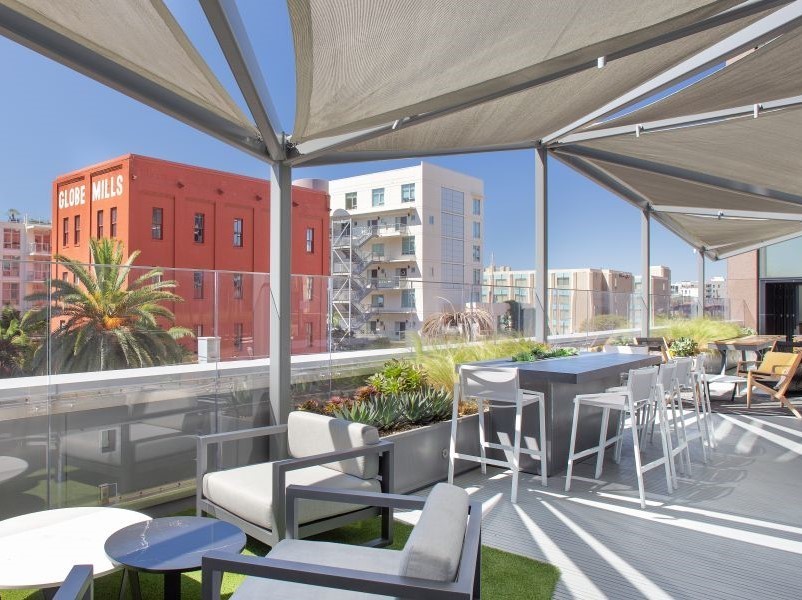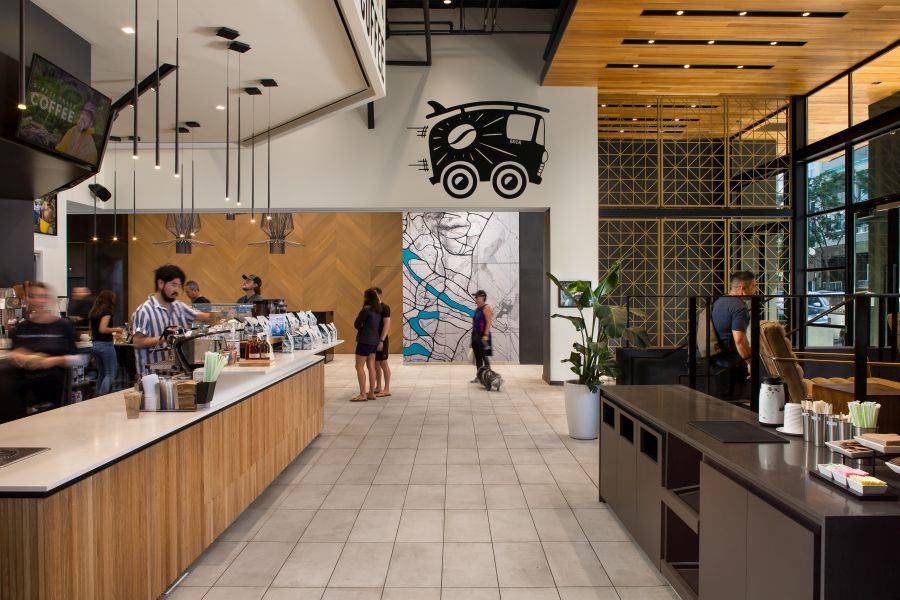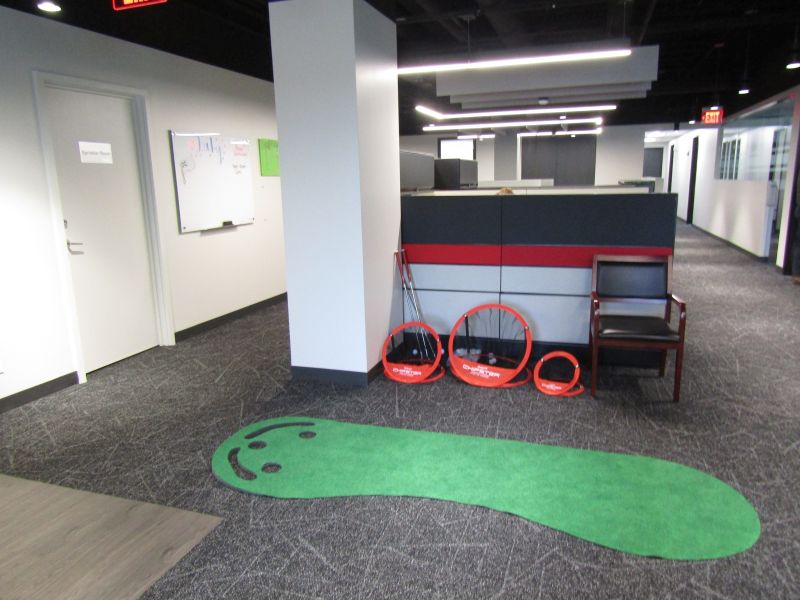[ad_1]

Outdoor terrace at the Kettner & Ash building in San Diego. Image courtesy of Haley Hill Photography
More than three years after the COVID-19 lockdowns dispatched office workers to their kitchen tables, spare bedrooms and closets, getting them back into the office remains an arduous task. It seems that initial offers of free food a year or so ago didn’t quite do the job.
So, what do workers want in order to return to the office full time—or at least with some regularity? To start with, more flexibility and the opportunity to at least save money, suggested Frank Weishaupt, CEO of communications equipment company Owl Labs, which recently released its 2023 State of Hybrid Work report.
One of the biggest reasons that employees are resisting return-to-office mandates is because they’re spending an average of $51 per day on commuting, parking, food, coffee, pet care and other goods and services—money they didn’t need to spend the last three years, he added.
READ ALSO: Office Struggles, Adaptations: An Architect’s Perspective
“Companies need to consider paying for employees’ commuting costs, subsidizing food and beverages, and providing child or eldercare,” Weishaupt declared. “The traditional perks that once worked are no longer cutting it.”
Emphasizing experience
Employers that recognize these challenges are focusing on creating workplace experiences that exceed the work-from-home experience—simply matching it fails to make up for the added costs and lost flexibility that accompanies returning to the office, said Bryan Berthold, global lead of workplace experience with Cushman & Wakefield. To do that, companies need to conduct surveys to find out what people want in an office environment.

Coffee shop at the Kettner & Ash building in San Diego, Calif. Image courtesy of Haley Hill Photography
Typically, a handful of common items related to productivity show up in the surveys that Cushman & Wakefield conducts, he added, such as dual monitors, conference room video capabilities that work better than what employees have at home, and ergonomic chairs. More broadly, employees want to be able to work from home when they need to concentrate on a task and go into the office for collaboration.
“Companies are really homing in on what matters most to their people,” Berthold said. “Employees have had work-life flexibility for three years, but the minute mandates are implemented, workplace experience and engagement drop.”
Albert DePlazaola, a senior principal with Unispace, a global strategy, design, project management and construction services firm, has seen similar technology demands in employee surveys. If the internet connection isn’t stronger in the office or if the collaborative tools don’t function any better than at home, it aggravates employees, he said.
“It’s less about having free dry cleaning and bone marrow and oysters for lunch,” DePlazaola remarked. “It’s more about being productive and collaborative and not simply doing the same things they would be doing at home.”
Happy team moments
Mosaic Construction, a fast-growing multifamily, commercial, residential and cannabis design-build firm based in Northbrook, Ill., surveyed its workers about a year ago when it began searching for new space. At that point, employees had largely already returned to the 2,200-square-foot office about four days a week, said Ira Singer, a founder of the company.

Indoor putting green at Mosaic Construction’s office in in Northbrook, Ill. Image courtesy of Mosaic Construction
Mosaic eventually found 5,800 square feet that had not only been built out during the pandemic, but that also provided better collaboration space, a large kitchen and private offices—all of which were highlighted as needs. Other elements include an indoor putting green, brand new furniture, natural light and the ability to easily expand, he remarked.
“We thought about private offices and the type of huddle space that would allow people to shut their doors and work or have a meeting without a lot of distractions,” Singer said. “We’re focused on culture, and there has been a banding together where we are experiencing happy team moments.”
Landlords step up
While Mosaic found a landlord who happened to have space ready to move into, other office owners are making broad improvements that can help companies entice workers back. That’s especially true in markets with high vacancy rates.
In San Francisco, for example, demand for office space was so high in the years leading up to the pandemic that building owners didn’t need to provide many amenities to attract tenants, observed Wes Powell, an executive managing director with JLL in the market. But with the vacancy rate now at a record high of around 30 percent, San Francisco landlords are adding outdoor areas, conference facilities, meeting rooms, tenant lounges, bike parking and fitness centers, he continued.
“These are things that have been happening throughout the U.S. for some time, and San Francisco is only now catching up,” Powell said. “Landlords are figuring out what they can do with their buildings physically and are making improvements pretty quickly in order to compete.”
READ ALSO: New Formulas for the New Office
In downtown San Diego’s Little Italy district, owners of the Kettner & Ash building are leveraging an art-filled, warm and inviting hotel atmosphere and coffee shop in the lobby to attract tenants, as well as a third-floor indoor-outdoor lounge with a catering kitchen, lounge, bar and shuffleboard.
The landlord also signed co-working firm Spaces to draw companies, said Derek Hulse, managing director of Cushman & Wakefield’s San Diego office division who represents building owners Divco West and Ocean West Capital Partners. The strategy has paid off. Last year, architecture firm Perkins & Will opened a San Diego office in the co-working space and then did a direct deal with the landlord.
“Maybe there will be a shift in the next couple of years, but for now, the hybrid work model is here to stay,” Hulse explained. “There’s been a realization that companies have excess space that they need to shed. But at the same time, companies still want highly amenitized and better-located space.”
[ad_2]
Source link



